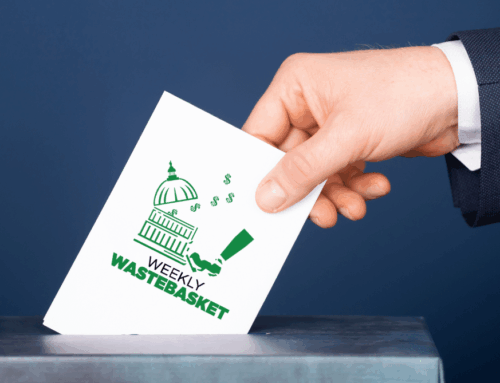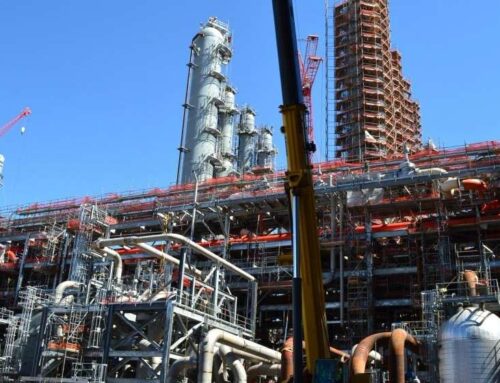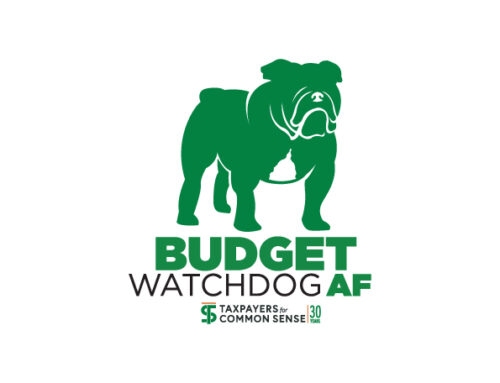The federal government shutdown continues—now stretching into its 23rd day and surpassing the infamous 1995-96 closure to become the second-longest in U.S. history. The only funding lapse longer was the 35-day shutdown from late 2018 to early 2019, which was triggered by an impasse over President Trump's demand for $5.7 billion to build a wall on the U.S.–Mexico border.
The shutdown is the sideshow; the real story is in the numbers. Treasury's latest Monthly Treasury Statement—the official scorecard of what the government spent and collected last year—shows that even when Washington stops functioning, the red ink keeps flowing. Washington shelled out $7.01 trillion—up 4.1 percent from last year's $6.73 trillion—and brought in $5.23 trillion in revenue, up 6.4 percent from $4.92 trillion. That leaves a $1.78 trillion hole. Technically, that's a bit smaller than last year's $1.82 trillion deficit, but not enough to brag about.
Revenues inched up mostly thanks to steady employment, higher tariffs, and a solid stream of income and payroll taxes. Corporate receipts, though, dropped 14.7 percent to $452 billion as new deductions and weaker profits, due in large part to the administration's trade war, kicked in. Customs duties—tariffs—spiked to $195 billion, more than double last year's $77 billion, though they're still a small slice of the federal revenue pie. Individuals continue to shoulder the vast majority of the tax load, and tariffs, while bigger, are unpredictable revenue at best.
On the spending side, the usual drivers still dominate. Social Security, Medicare, and Medicaid together topped $3 trillion. Defense climbed to $916.6 billion, up nearly 5 percent. Interest payments surged past $970 billion—a 10 percent jump—making them the fastest-growing item in the entire budget. The deficit may have narrowed slightly, but the story hasn't changed.
Defense: Paying More for the Same Security
The Pentagon's books show $868.4 billion in gross spending, up 5 percent from last year. Every category grew—operations and maintenance ($342.4 billion), procurement ($162 billion), research and development ($141.4 billion), and military personnel ($206.5 billion).
As TCS has repeatedly argued, budgeting for national security requires strategic prioritization, not unchecked spending on every program under the sun. The Pentagon still can't pass an audit, maintains about 30 percent more infrastructure than it needs, and continues pouring money into programs that don't deliver for taxpayers. Until Congress and the Pentagon are willing to exercise fiscal discipline and make strategic decisions about where limited funds are best spent, taxpayers will continue paying more and getting less.
Agriculture: A Safety Net That Keeps Stretching
The Department of Agriculture's spending reached $227.4 billion, up nearly 12 percent from $203.4 billion last year. That included $13.8 billion for crop insurance—up 41 percent from the year before—and roughly $10 billion through the Farm Service Agency, including $5.6 billion for the Commodity Credit Corporation and the rest for farm loans and disaster programs.
Farm incomes were solid, but Washington's safety net programs keep expanding anyway. As TCS has shown in Billions More for Biofuels and BWAF Podcast — Ep. 82: Farms First Again?, subsidies still reward overproduction regardless of need. Crop insurance alone remains a black box—taxpayers cover about 60 percent of premiums and nearly all losses in bad years. Conservation and rural development spending barely moved. Those are the very investments that could lower future disaster costs, yet taxpayers keep footing the bill for the same risks year after year.
Energy and Interior: Subsidies in Search of Oversight
Together, the Energy and Interior Departments spent $74.7 billion in FY 2025. DOE's $52.3 billion in gross spending included about $21 billion for research, demonstration projects, and loan programs, while its net outlays rose to roughly $46 billion—up about 7 percent from last year. Interior's net spending reached $22.4 billion, up 31 percent from $17.1 billion.
As TCS has previously noted in Energy Winners and Losers in the One Big Beautiful Bill, DOE's massive portfolio of demonstration projects and loans keeps blurring the line between investment and subsidy. Taxpayers are taking on real financial risk without any real return on investment or clear accountability.
At Interior, most of the $22.4 billion went to land and mineral management, mine reclamation, water and reclamation projects, and payments to states from mineral leasing revenues. TCS review shows that taxpayers still aren't guaranteed a fair return—or insulation from cleanup costs when companies walk away. Rising reclamation costs and shrinking royalties add up to the same result: taxpayers paying for yesterday's extraction.
FEMA and Disaster Spending: The Fire Drill Never Ends
FEMA's outlays shot up to $62 billion this year, a 72 percent jump from $36 billion. The Disaster Relief Fund alone accounted for $52 billion, while the National Flood Insurance Program lost $7 billion.
It's a familiar pattern that TCS has chronicled in the Twenty Years of Disaster Déjà Vu and Bringing Common Sense Back to Federal Emergency Management: a reactive system that pours billions into rebuilding while underinvesting in property-protecting and life-saving prevention. NFIP still charges premiums too low to cover actual risk and stays buried in debt. Instead of breaking the cycle, federal policy keeps it spinning—rebuild, bail out, repeat.
The Bigger Picture
Add it all up and agriculture, defense, energy, natural resources, and disaster spending totaled about $1.22 trillion in gross outlays last year. Many of these programs were created to protect taxpayers—from crop failures, foreign threats, or natural disasters—but over time, too many have become sources of unchecked cost and complacency.
The Treasury's report isn't just an accounting of the past year; it's a warning. The federal government is spending more by default, not by design. Mandatory programs grow automatically, subsidies rarely sunset, and "temporary" disaster aid is now a standing expense. Until Congress confronts that inertia—by tying spending to measurable outcomes and sunsetting programs that have outlived their purpose—taxpayers will keep paying for the same promises, and getting the same results.
- Photo by Andy Feliciotti on Unsplash










